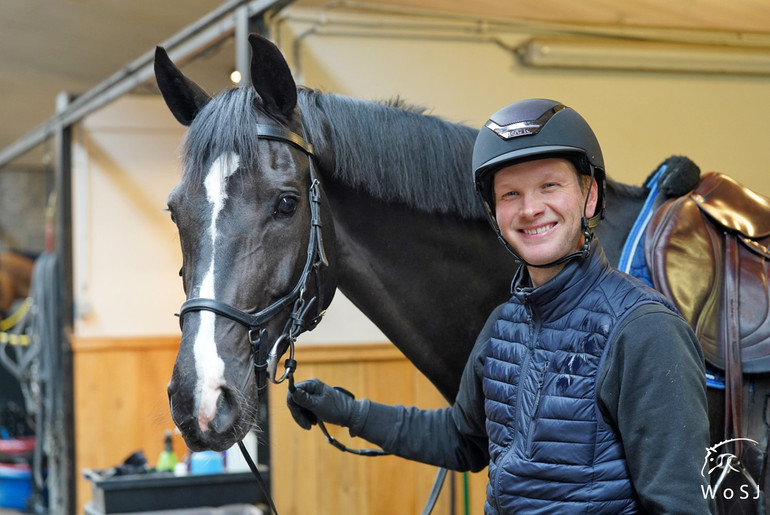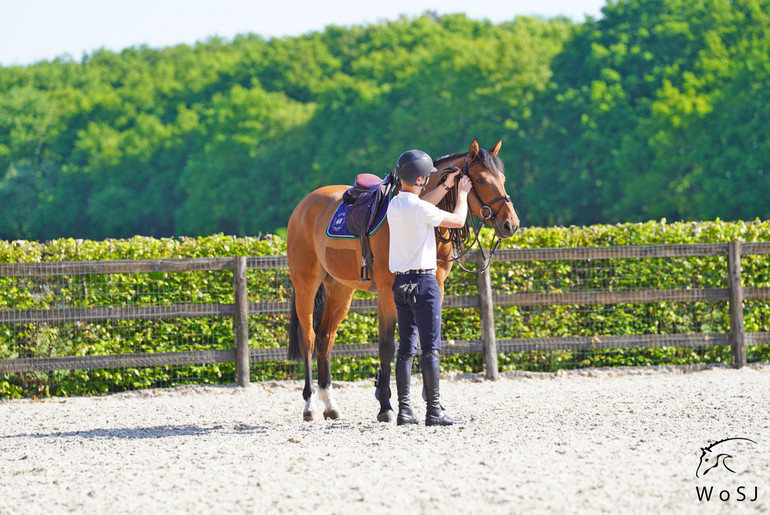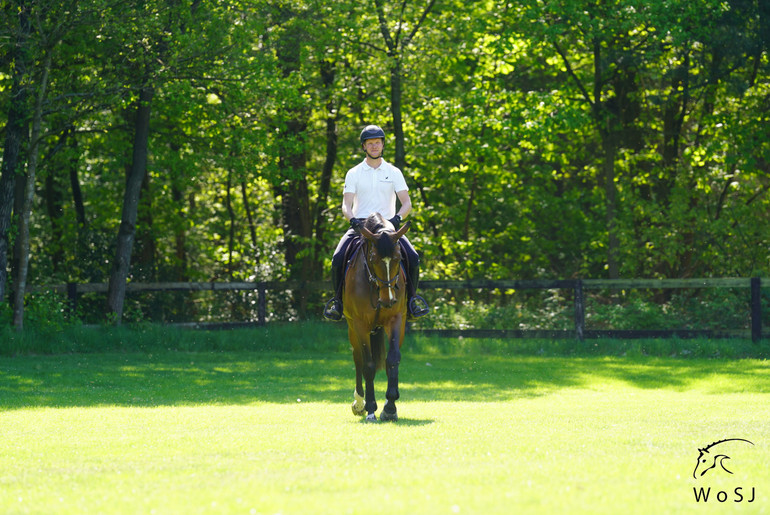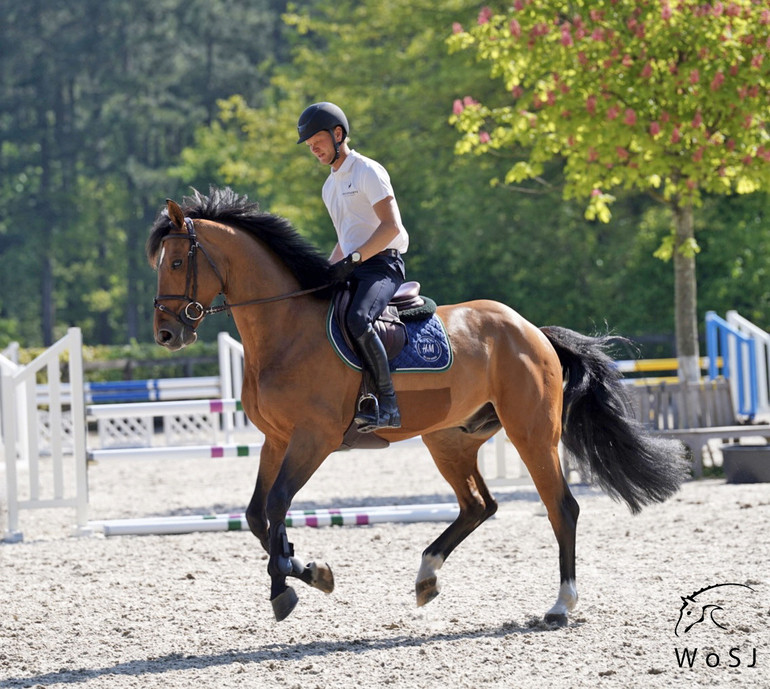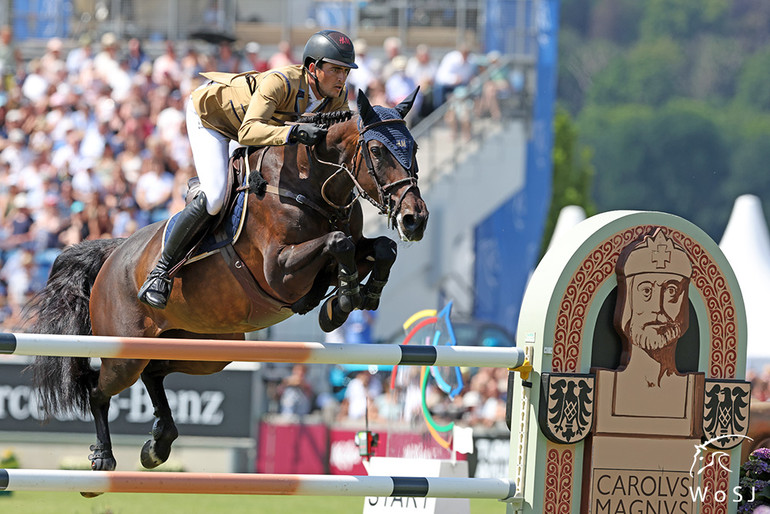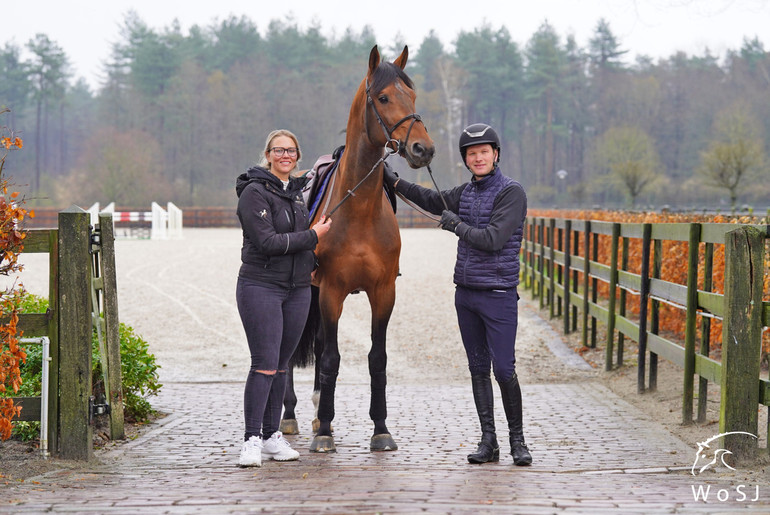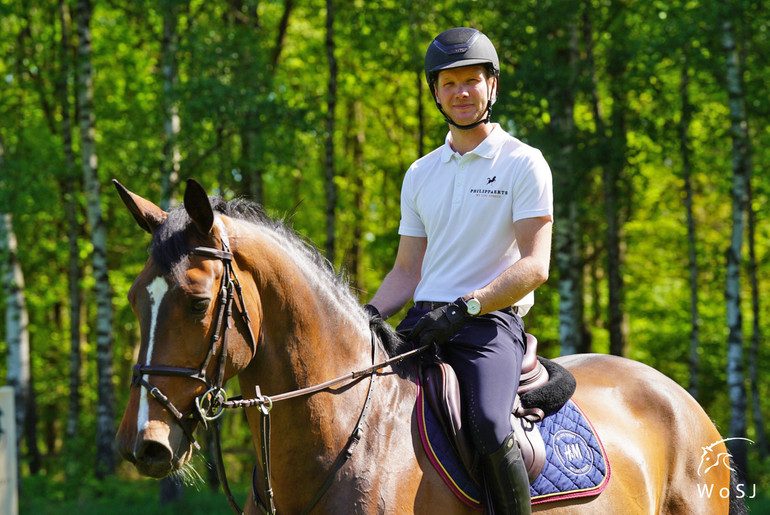Text © World of Showjumping
World of Showjumping took a peek behind the scenes at Team Philippaerts’ stables and met Stijn Timmerman, who is responsible for producing young horses for Olivier, Nicola, Anthony, Thibault and Ludo Philippaerts. “Their job is to perform, and my role is to be less competitive,” Stijn says. “They don’t have time for the things that I do – and they don’t have to either.”
A simple approach
“Most of the time, there is a lot of work with the horses, because it is not like we are buying a finished product – we buy them young,” Stijn begins. “Producing a horse is like driving on a highway: Sometimes, you can go straight forward, but other times – to get to the same destination – you have to take an exit and go for another, perhaps longer, route.”
Producing a horse is like driving on a highway: Sometimes, you can go straight forward, but other times – to get to the same destination – you have to take an exit and go for another, perhaps longer, route
For Stijn, seeing the evolution of each horse is more rewarding than winning a class. “I enjoy a horse going well on the flat, it gives me a lot of satisfaction seeing change in a horse,” he explains. “I pay a lot of attention to the flat work. First of all, I think it is very important to get the horse balanced. I believe that the horse is not created for dressage, but dressage is created for the horse – we can really help them with the work we do on the flat, both physically and mentally. For me, it is nice when the riders here can sit on a horse that I have worked with and feel good enough to go directly into a big class. It is also good for the trading when a horse is well ridden.”
“When I get a new horse, I try to keep everything as simple as possible,” Stijn tells about his approach. “With a normal snaffle you have the most honest version of the horse. I think all horses can go and do the basics in a normal snaffle if you as a rider take your time and do it well. In the end, there are no short cuts. If you think long-term, the basics have to be solid – otherwise you get a wave in your performance instead of consistency.”
When I get a new horse, I try to keep everything as simple as possible
“All the horses get a chance by me, I think they all deserve it. Of course, there are some favourites – like Katanga or Aqaba – I think that is normal. However, I think all horses need the same attention; you have to treat them all with the same respect. You have to have discipline, but it does not mean being hard – I think when you ride correct, the horses get disciplined. You never see me fighting with a horse; pulling and kicking is unfair and makes absolutely no sense,” Stijn says.
Patience and repetition
“I do show a lot, almost weekly on national level,” Stijn continues. “However, there is no pressure. I think training shows are good for the horses. If the horses make a fault or you ride a bad line at a show, you can’t repeat it, whereas at a training show you can. I think in this way – with no pressure and with repetition – horses learn the best. However, with some horses, you should not even think about competitions; you need a solid base before you can go further. It is all about having patience, and you learn that with horses – you have to. You have to repeat, repeat, repeat and stay patient. Of course I am competitive, but I don’t want to lose the education of the horse. Sometimes it is better to be happy about a third place than to push for the win. It is a thin line: By going too fast too soon, you can lose all the work you have put in.”
It is all about having patience, and you learn that with horses – you have to
“The biggest challenge in my work is to make something of the horses we get; and it does not always work,” Stijn says. “I think you have to hold on to the positives in the progress the horse makes, but also stay realistic. However, it does not make sense to waste time either. Some horses need more time than others, but it is hard to judge. I think it is important to be honest and admit if a horse does not fit you – maybe someone else has to try. Here, we decide together; maybe another rider has a better connection with a horse. I think every rider has their own way of doing things, and being different doesn’t automatically make it incorrect. There are always different visions on how to approach a horse and how to ride, even within this family. That is our strength as well; we have a lot of horses and sometimes a horse fits better with another rider – there is not really one system that works.”
“I believe in making a horse, and the mental aspect of it is huge; they have to trust you and fight for you,” Stijn continues. “Scope is hard to judge, as it also depends on the horses’ mental state. If a horse wants to do it, they can build more scope. Therefore, success does not always come with the most scopey horse, but with a horse that trusts its rider. I really believe that every horse has their rider, that one perfect match.”
Katanga v/h Dingeshof
In February 2019, Stijn won the CSI2* Grand Prix in Oliva Nova with the then 9-year-old mare Katanga v/h Dingeshof (Cardento x Tornado) – a horse that Nicola now competes successfully on five-star level. “It was my first two-star Grand Prix win and since I don’t compete much on that level, it was even more special,” Stijn recalls. “Furthermore, the journey with Katanga was so difficult. In the beginning, her rideability was a challenge: I lunged her for one month and only sat on her for a few minutes – to keep her relaxed. You can only start building a horse once it is relaxed and trusts you. I got Katanga as an eight-year-old and from the beginning of May until the end of October, I did not show her at all. We only worked on the flat, jumped small fences at home, she was unrideable back then. We started building up from some small shows; we won a Grand Prix in Moorsele, we were 5th in the Belgian Indoor Championships in Mechelen and after the win in Oliva, Nicola took over the reins. Seeing her now, she is one of the better horses in the world and it is nice to have been a part of her journey.”
A relationship of trust
During his years at Philippaerts, Stijn has worked alongside Lindsay Decottignies. “I think it is very important to have a groom you can trust,” he says. “As a rider, I naturally focus more on the riding, but my groom probably knows the horses better than I do. It is important to know that your groom takes the best possible care of the horses. Sometimes a horse does not look like it feels, and I can get another approach from Lindsay. However, she is more competitive. For me, it is nice to do a bigger show every now and then; it does make you better as a rider and working towards something gives you motivation. If you can show your good work with a good performance at a show, it is nice. For Lindsay, shows are a big motivation and sometimes she gets to go to the higher-level shows with the other riders of the team – which I don’t mind, as I know it makes her happy and keeps her motivated.”
I think it is very important to have a groom you can trust
“We have a very good working relationship,” Lindsay fills in. “Stijn is not complicated at all, we speak a lot about the horses and he listens to my opinion. Sometimes I might see things on the horses that he has not noticed. When we get a new horse, the most important thing for me is just to be careful and pay attention to them. Our horses move on to Olivier, Nicola, Thibault, Anthony or Ludo when they are ready and for me, seeing them go is sometimes a bit difficult. Like Katanga – still, every time I see her, I cuddle her; she is my princess.”
“I think how we have it is a dream for many; the facilities here are super for the horses, we have everything we need,” Stijn continues. “Also, it is not a boss-employee-situation, it is like a family. And, in my opinion, people stay longer if you can create a relationship of trust.”
From construction work to horses
With the horsemanship that Stijn emits, it is easy to think that the 33-year-old must have been born in the saddle – which is far from the truth. “I don’t come from a horse family, not at all,” Stijn smiles. “Friends of my parents had ponies from Iceland, and that is how I started riding. I did it as a hobby back then, and until I was 26, I had never jumped higher than a 1.30m class. If you are not from a horse family, it does not go so fast in this sport... From the outside, the horse world can seem intimidating and that is how I felt too. I worked in construction, because I thought the horse world was tough – but in the end I got a chance to get in and do what I am passionate about.”
Stijn worked six years in construction and rode in the evenings before meeting Jan Simons, who gave him the contact to Philippaerts, where he started with a few half days, until he was offered a fulltime job. “I think that in life, when you do a good job, you create your own opportunities. It is up to everyone themselves to grab what comes their way – or not. I think luck doesn’t really exist – I believe good work creates luck,” Stijn says.
No reproduction without written permission, copyright © World of Showjumping.com



